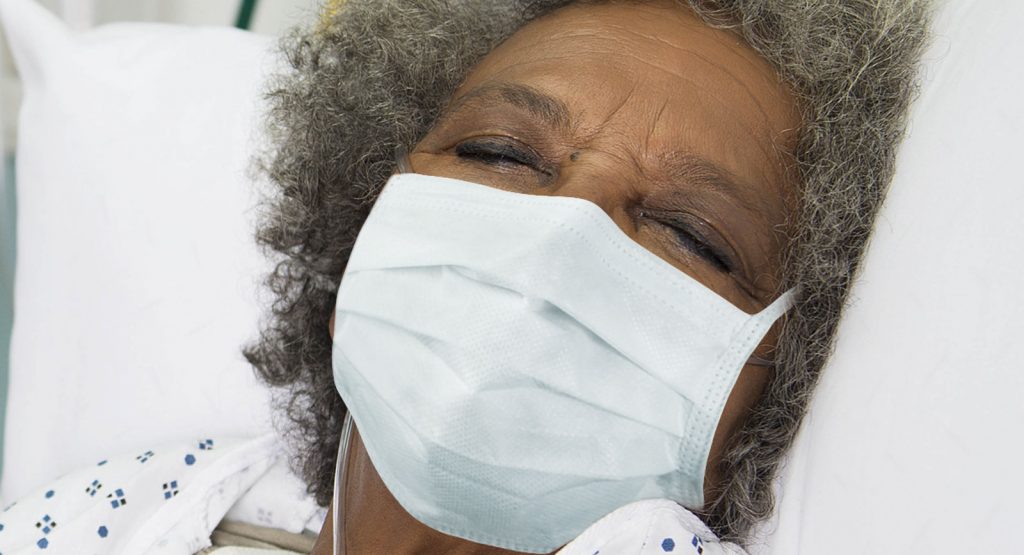To Intubate COVID-19 Patients, or Not?

Some of the early studies from the Wuhan Province noted the very high mortality rates of COVID-19 patients who were put on mechanical ventilation (MV)—81% [1] and 97% [2]. The authors of those studies urged the need for further studies and discussed that those outcomes could be correlated with the fact that those patients needing MV already had very severe disease progression. Nevertheless, the numbers were stark and as the pandemic continues, clinical circles have largely accepted that COVID-19 patients on ventilators don’t do very well. Even popular media outlets have begun diversifying the narrative from ‘more ventilators needed’ to adding headlines like “Some doctors moving away from ventilators for virus patients.” [3]
Why not use intubation as a first-line of defense?
While we don’t know the conclusive mortality rate of COVID-19 patients on ventilators, avoiding intubation as a front-line treatment is already suggested by medical organizations across the world. The World Health Organization (WHO), the Centers for Disease Control and Prevention (CDC), the Society of Critical Care Medicine (SCCM) as well as guidance from China, Italy, Germany, Australia and others suggest trying non-invasive options, including high-flow oxygen (like high velocity nasal therapy or high flow nasal cannula [HFNC]). The guidelines provide limitations to these trials and MV is recommended of course if the patient cannot be stabilized with non-invasive modes of oxygen support.
MV is a key, life-saving tool, but it carries known risks, including the need to sedate the patient, an increased risk of inflammation, a risk of pneumothorax and barotrauma among others. [4] Once on MV, the patient cannot speak, or eat or drink and may require more contact from the healthcare provider (HCP), which in turn exposes the HCP more frequently to an infected patient.
In contrast, application of high flow oxygen carries significantly fewer and less serious side effects. The patient can remain unsedated and can interact with the clinician. Regarding HCP transmission risk, computer modeling suggests that use of a surgical mask over high velocity therapy may reduce the risk of particle dispersion and therewith the potential for HCPs to come into contact with infected particles. [5]
Having high velocity therapy as a tool is not a silver bullet, of course. Some patients do deteriorate and require MV. This raises the question: Which patients are good candidates for which tool?
‘Silent Hypoxemia’ vs. ‘Severe ARDS’
Gattinoni and colleagues published a letter in Intensive Care Medicine that could help answer this question. The piece is titled “COVID-19 pneumonia: different respiratory treatment for different phenotypes?” and identifies two different types of COVID-19 patients. [6] Both types are diagnosed via a CT scan. One, the authors call Type L—and also refer to it as ’silent hypoxemic,’—and the other Type H, which more classically resembles severe ARDS. Their characteristics as described by the authors are shown in Table 1.

The authors note that in their patient sample (n=150) Type L accounted for 70-80% of patients and Type H for 20-30%. They suggest that Type H could benefit from immediate intubation while for Type L, the suggested first-line tools are high flow, CPAP and NiPPV.
Their paper can be accessed in full and serves as another potential insight into treating this new disease.
Visit our COVID-19 Resource Center for up-to-date answers to additional frequently asked questions.
REFERENCES
[1] Yang X Yu Y Xu J et al. Clinical course and outcomes of critically ill patients with SARS-CoV-2 pneumonia in Wuhan, China: a single-centered, retrospective, observational study. Lancet Respir Med. 2020; (published online Feb 24.) https://doi.org/10.1016/S2213-600(20)30079-5
[2] Zhou F Yu T Du R et al. Clinical course and risk factors for mortality of adult inpatients with COVID-19 in Wuhan, China: a retrospective cohort study. Lancet. 2020; (published online March 9.) https://doi.org/10.1016/S0140-6736(20)30566-3
[3] Stobbe, Mike. “Some doctors moving away from ventilators for virus patients.” Associated Press. April 8, 2020. Last accessed: April 9, 2020. https://apnews.com/8ccd325c2be9bf454c2128dcb7bd616d
[4] Pierson, DJ. Complications associated with mechanical ventilation. Crit Care Clin. 1990 Jul;6(3):711-24.
[5] Leonard S, Atwood CW Jr, Walsh BK, DeBellis RJ, Dungan GC, Strasser W, Whittle JS, Preliminary Findings of Control of Dispersion of Aerosols and Droplets during High Velocity Nasal Insufflation Therapy Using a Simple Surgical Mask: Implications for High Flow Nasal Cannula, CHEST (2020), doi:https://doi.org/10.1016/j.chest.2020.03.043.
[6] Gattinoni L. et al. COVID-19 pneumonia: different respiratory treatment for different phenotypes? (2020) Intensive Care Medicine; DOI: 10.1007/s00134-020-06033-2